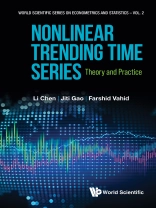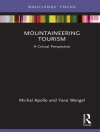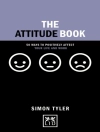Trends often play a dominant role in many empirical time series data, but do we truly understand these trends? What challenges arise when dealing with complex, nonstationary trending time series? How do we model such trends in fields like economics, finance, and climate change?
This book provides an overview of recently developed models for trending time series and introduces new nonlinear, nonparametric, and semiparametric methods. Specifically, it offers practical approaches to address the problem of endogeneity in linear trending regression models where the trend component is either weak or strong. Additionally, it proposes a testing procedure for identifying common trends across multiple time series and includes illustrative examples from economics, finance, and climate change.
As a practical toolbox, this book equips analysts with essential methods for investigating trends in their research and applications.
Contents:
- Introduction
- Trending Time Series Models
- Time Series Regressions with Weak Trends
- Time Series Regressions with Strong Trends
- Testing for Common Trends
- Applications in Climate Change
- Appendix: Proofs of the Lemmas
Readership: Advanced undergraduate and graduate students majoring in Economics, Finance and Statistics, as well as researchers and practitioners in the fields of climatology, economics, econometrics and finance.
Key Features:
- This book offers a comprehensive overview of recently developed trending time series models, presenting useful nonlinear, nonparametric, and semiparametric approaches to identify, estimate, and test for trends in nonstationary trending time series
- It also offers illustrative examples demonstrating the application of these models and methodologies to economics, finance, and climate change research
- Therefore, this book serves as a practical toolbox for empirical analysts to investigate trends in their daily work and research












